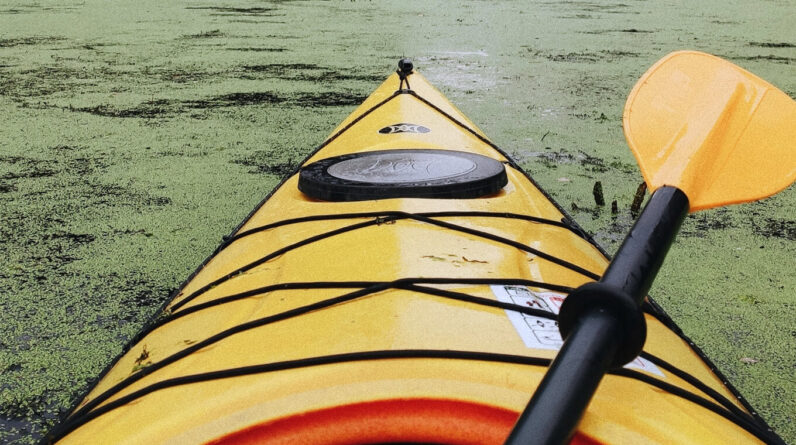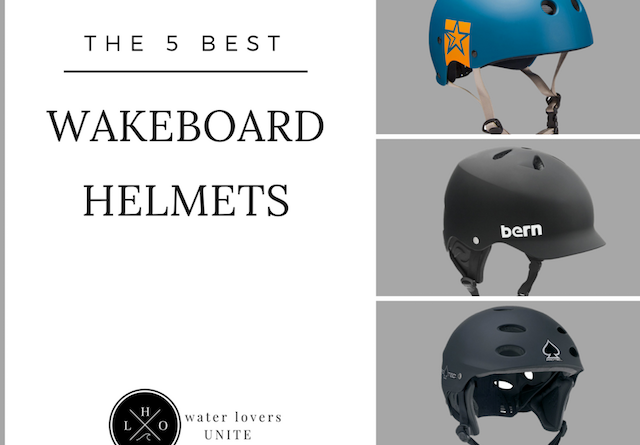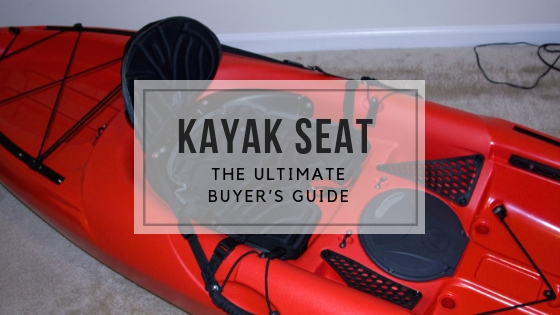
Are you in search of the perfect kayak seat to enhance your paddling experience? Look no further! In this comprehensive guide, we will explore the various types of kayak seats available and provide you with valuable tips on how to choose the right one for you. Whether you’re a seasoned kayaker or a beginner, this article will help you navigate through the sea of options and find the perfect seat that ensures comfort, support, and a delightful journey on the water. So get ready to discover the key factors to consider when choosing a kayak seat and make your next adventure even more enjoyable.
Types of Kayak Seats
Basic Kayak Seats
Basic kayak seats are the simplest and most affordable option available. They typically consist of a basic seatpad with minimal padding and may not offer much in terms of back support. These seats are great for beginners or occasional kayakers who don’t require excessive comfort or support.
Cushioned Kayak Seats
Cushioned kayak seats offer extra comfort through additional padding. They are designed to provide a more comfortable experience, especially on longer kayaking trips. These seats are a popular choice for recreational kayakers who value comfort during their outings.
High Back Kayak Seats
High back kayak seats are designed to provide ample back and upper body support. These seats typically feature a higher backrest that allows you to lean back and relax while paddling. High back seats are especially beneficial for those with lower back issues or for those who spend extended periods on the water.
Low Back Kayak Seats
Low back kayak seats, on the other hand, prioritize mobility and a lower profile. These seats are commonly found in performance-oriented kayaks, such as sit-inside touring or racing kayaks. They allow for greater freedom of movement and are favored by more advanced paddlers who require agility and flexibility.
Adjustable Kayak Seats
Adjustable kayak seats offer versatility in terms of customization. They typically allow you to adjust the height, angle, and position of the seat to suit your preferences and body type. Adjustable seats are a great option for those who share their kayak with others or for those who like to experiment with various seating positions.
Factors to Consider
Comfort
When it comes to choosing a kayak seat, comfort is paramount. A comfortable seat can make all the difference in ensuring an enjoyable kayaking experience. Consider the following aspects of comfort when selecting a seat.
Padding
The amount and quality of padding in a kayak seat determine how comfortable it will be. Look for seats with adequate cushioning to provide support and prevent discomfort during long hours on the water.
Size
Ensure that the seat is the right size for your body. A seat that is too small may cause discomfort and restrict your movement, while a seat that is too large can feel unstable. Take into account your body dimensions and the dimensions of your kayak when selecting a seat.
Ergonomics
Ergonomics refer to the design and fit of the seat. Look for seats that are ergonomically shaped to support the natural curves of your body, providing optimal comfort and reducing strain on your back and muscles.
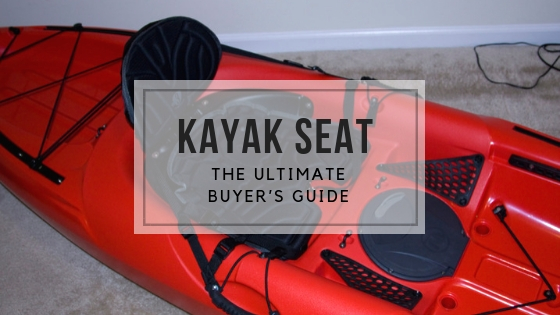
This image is property of i1.wp.com.
Support
The support provided by a kayak seat is crucial for maintaining proper posture and preventing fatigue or injury. Consider the following aspects of support when choosing a seat.
Back Support
A seat with good back support will help maintain proper spinal alignment and reduce strain on your back muscles. Look for seats with a well-designed backrest that supports the natural curvature of your spine.
Lumbar Support
Lumbar support is particularly important for those with lower back issues. Look for seats that have built-in lumbar support or adjustable features that allow you to position the support where you need it most.
Thigh Support
Thigh support can enhance stability and comfort by helping distribute your weight properly. Some seats come with adjustable thigh support pads or contours that can be customized to fit your body shape.
Durability
Durability is an important consideration when choosing a kayak seat, as it needs to withstand the elements and regular use. Consider the following aspects of durability when selecting a seat.
Materials
Look for seats made of high-quality materials that are water-resistant and UV-resistant. Materials such as nylon or polyester are commonly used in kayak seats due to their durability and resistance to wear and tear.
Construction
Pay attention to the construction of the seat. Reinforced stitching and sturdy straps or buckles are indicators of a well-constructed seat that will withstand the rigors of kayaking.

This image is property of www.kayaks2fish.com.
Ventilation
Ventilation is important to prevent sweating and discomfort during hot weather or intense physical activity. Consider the following aspects of ventilation when choosing a seat.
Breathable Materials
Seats made with breathable materials allow air circulation and help regulate temperature. Look for seats with mesh or perforated panels that promote airflow and prevent excessive heat and moisture buildup.
Mesh Panels
Seats that feature mesh panels can provide additional ventilation. The mesh allows air to flow through, keeping you cool and comfortable even during strenuous paddling.
Storage Options
Having storage options in your kayak seat can be convenient, especially for those who like to keep their essentials within reach. Consider the following storage options when selecting a seat.
Built-in Pockets
Some kayak seats come with built-in pockets or pouches where you can store small items like keys, sunscreen, or snacks. These pockets keep your belongings secure and easily accessible while you’re on the water.
Attachment Points
Look for seats with attachment points or bungee cords that allow you to secure additional gear or accessories to the seat. This feature can be useful for attaching a water bottle holder, fishing rod holder, or other equipment.
Accessory Compatibility
Consider the compatibility of the seat with other kayak accessories. Some seats are designed to work seamlessly with specific brands or models of accessories, allowing for easy integration and customization of your kayak setup.
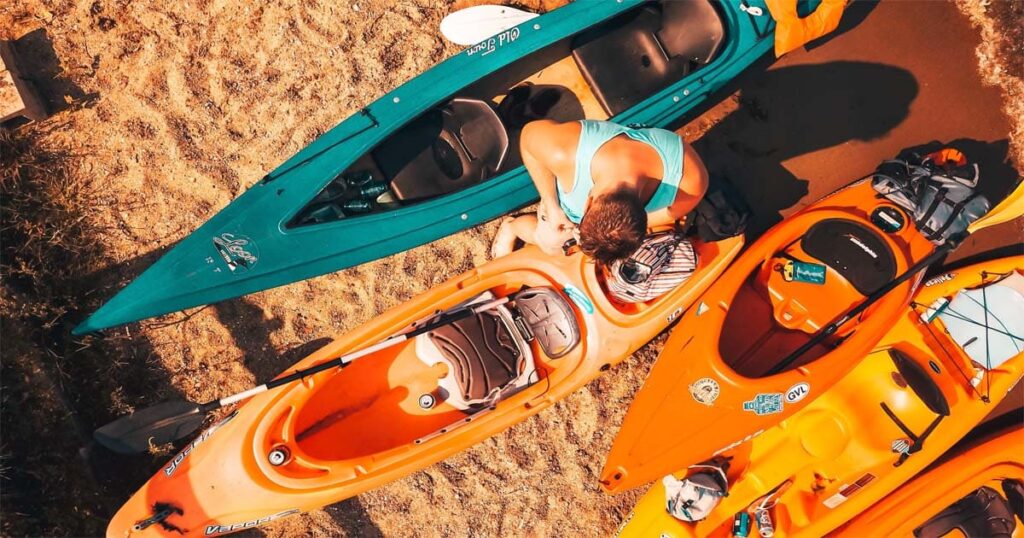
This image is property of ecpaddlesports.com.
Compatibility
It’s important to choose a kayak seat that is compatible with your specific kayak type. Consider the following compatibility factors when selecting a seat.
Sit-on-Top Kayaks
If you own a sit-on-top kayak, ensure that the seat is compatible with the attachment points or strap systems on your kayak. Make sure the dimensions of the seat align with the seating area of your kayak to ensure a proper fit.
Sit-Inside Kayaks
For sit-inside kayaks, consider the seat’s compatibility with the cockpit size and shape of your kayak. Look for seats that can be easily installed and secured within the cockpit area without compromising your ability to enter or exit the kayak.
Price
Price is always an important consideration when making any purchase. Consider the following factors related to price when selecting a kayak seat.
Budget
Determine your budget range before starting your search for a kayak seat. Basic seats tend to be more affordable, while seats with advanced features or higher-quality materials may come with a higher price tag. Consider your priorities and choose a seat that fits both your needs and your budget.
Quality vs. Cost
While it can be tempting to opt for the cheapest option, keep in mind that the quality of the seat should also be considered. A slightly higher investment in a quality seat may provide better comfort, durability, and support in the long run. Strike a balance between cost and quality to ensure you get the best value for your money.

This image is property of seakayakexplorer.com.
Personal Preferences
In addition to the factors outlined above, personal preferences also play a significant role in choosing the right kayak seat. Consider the following factors based on your individual preferences.
Paddling Style
Different kayak seats may be better suited to different paddling styles. If you engage in more relaxed, leisurely paddling, comfort may be your top priority. However, if you’re into more adventurous or high-performance paddling, you may prioritize mobility and low-profile seats.
Body Type
Consider your body type when selecting a kayak seat. Some seats may be better suited for individuals with broader or narrower frames, while others may offer adjustability to accommodate different body shapes and sizes. Finding a seat that fits your body comfortably is essential for an enjoyable kayaking experience.
Experience Level
Your experience level as a kayaker may also influence your seat preferences. Beginners may value stability and comfort, while more experienced paddlers may prioritize agility, support, and customization options. Consider how your experience level affects your seating needs and choose accordingly.
By considering the types of kayak seats available and evaluating the various factors outlined above, you’ll be well-equipped to choose the right kayak seat for your needs and preferences. Remember, selecting a comfortable and supportive seat can significantly enhance your enjoyment and comfort during your kayaking adventures. Happy paddling!

